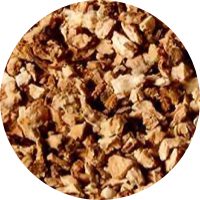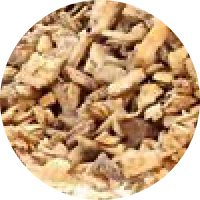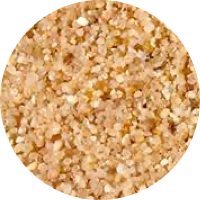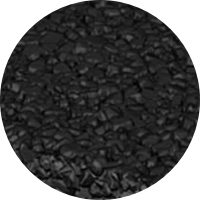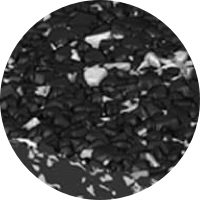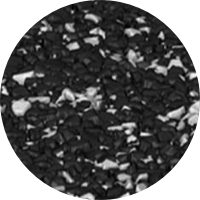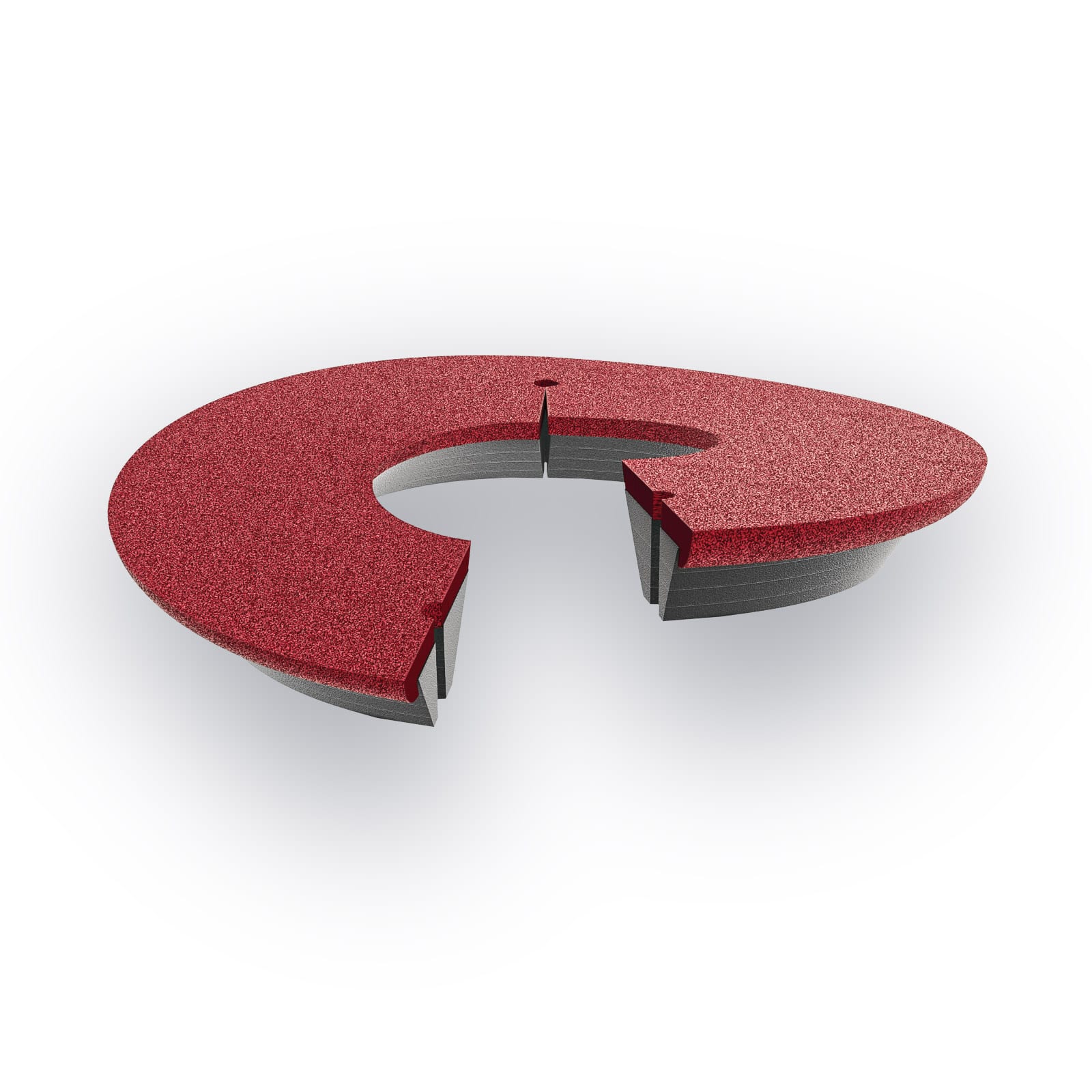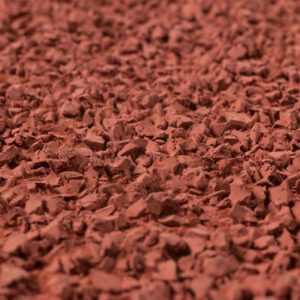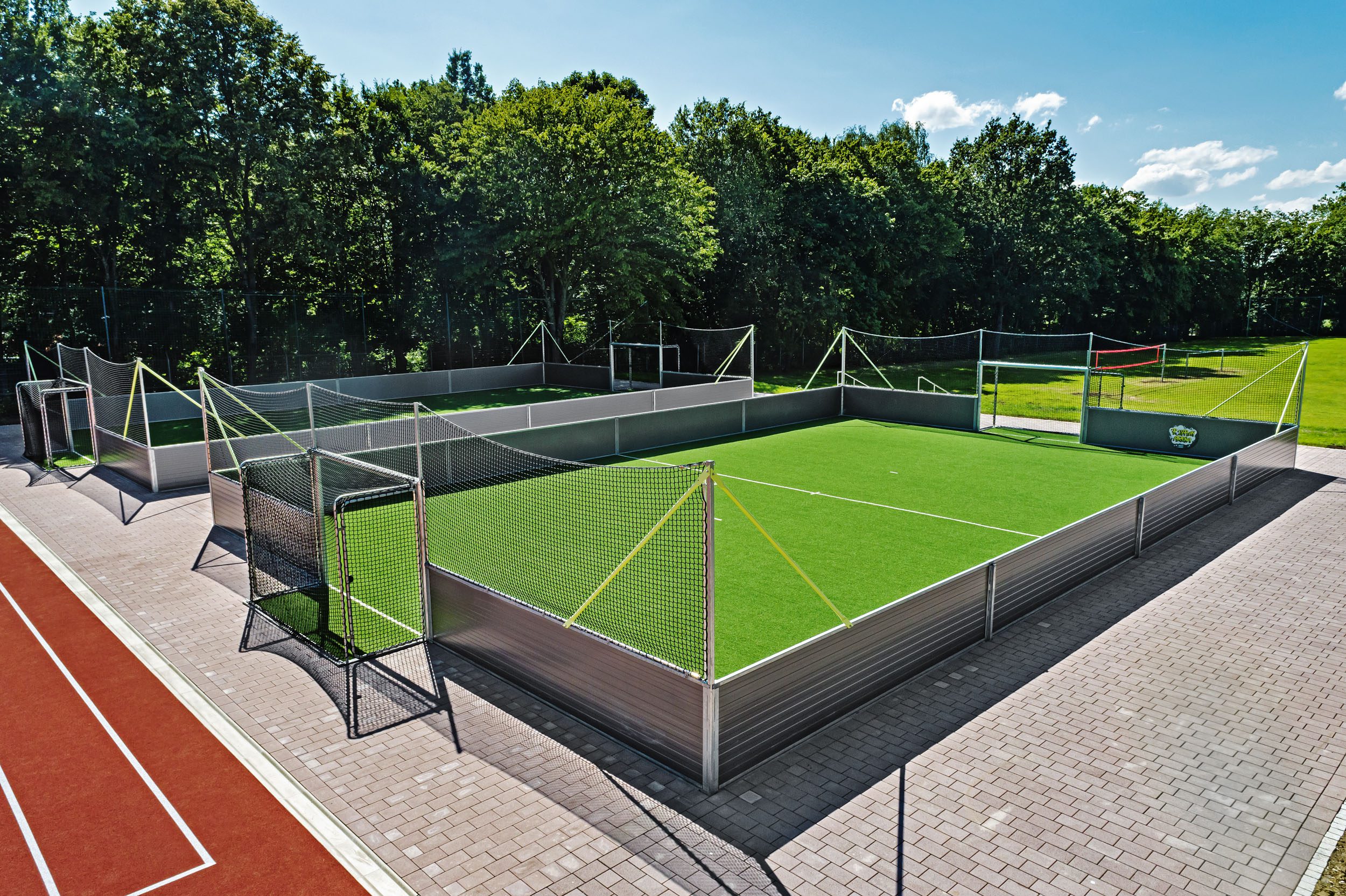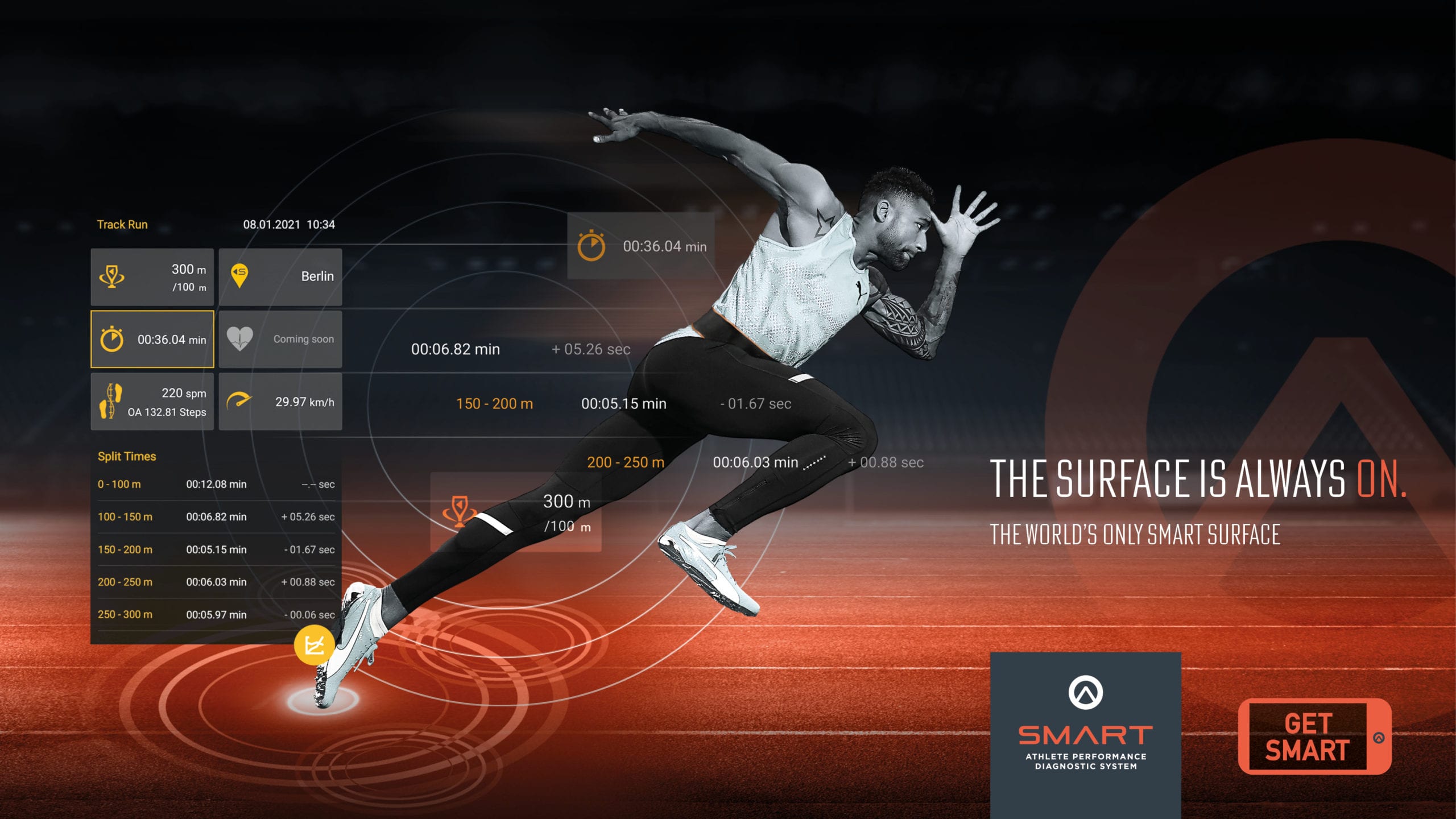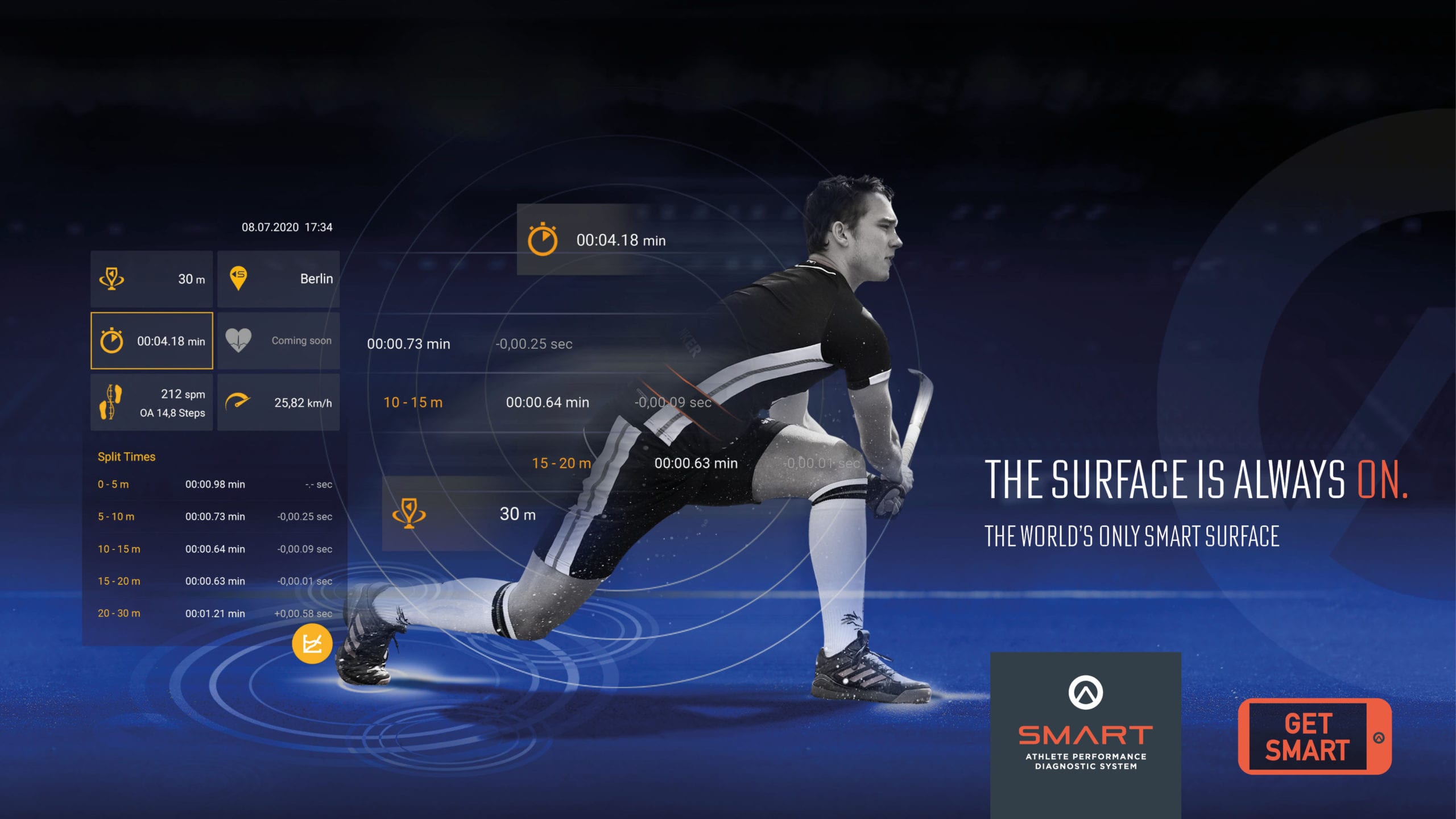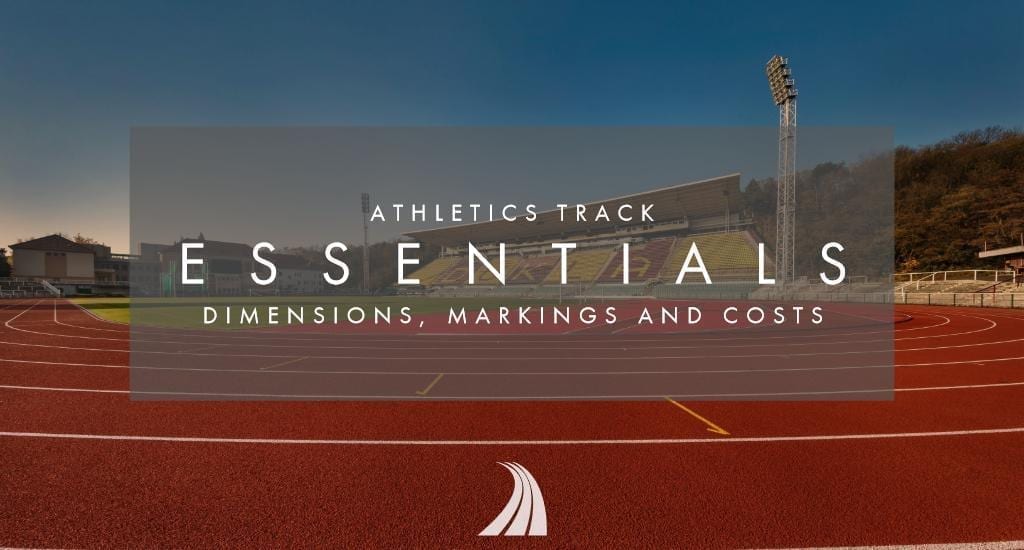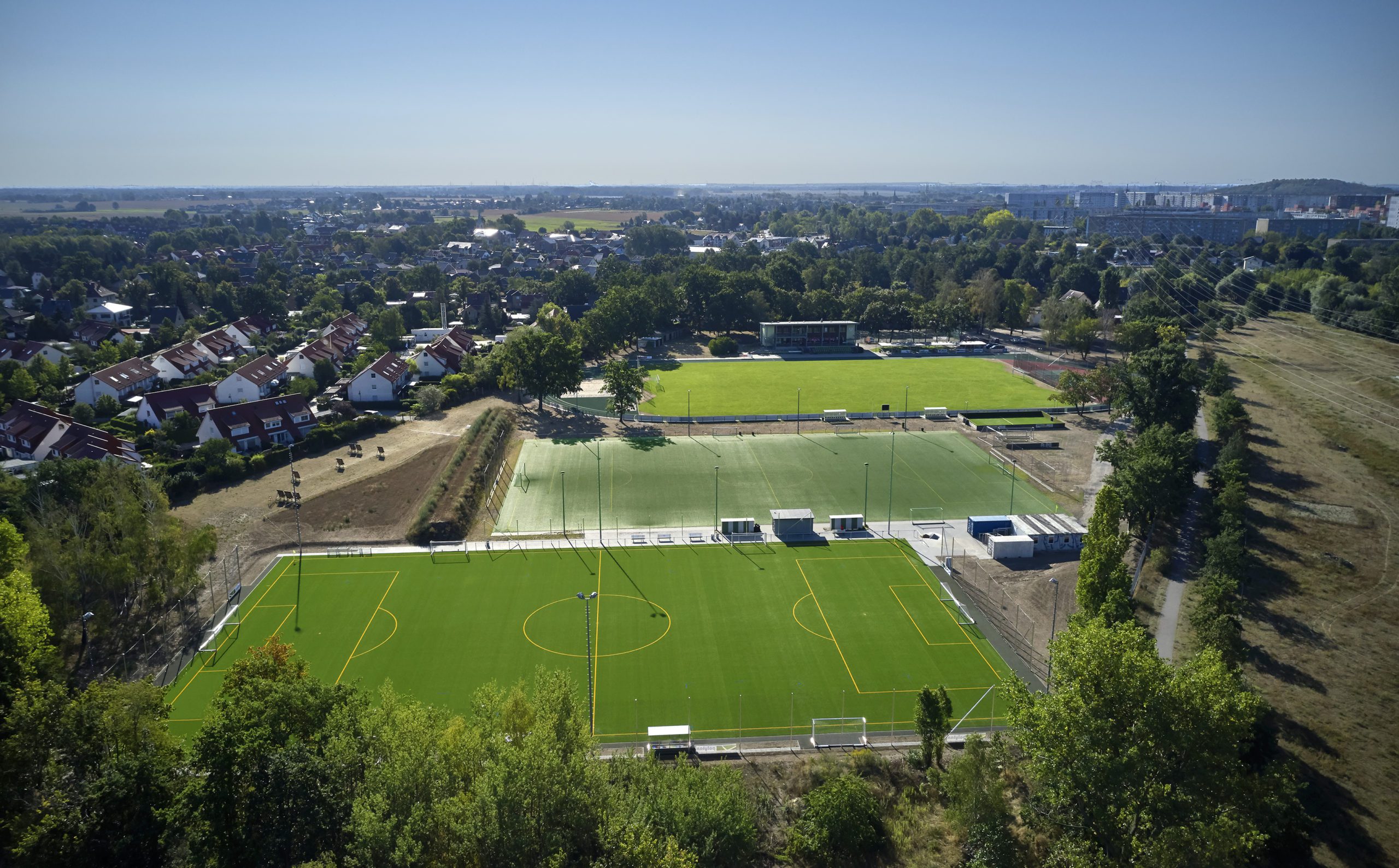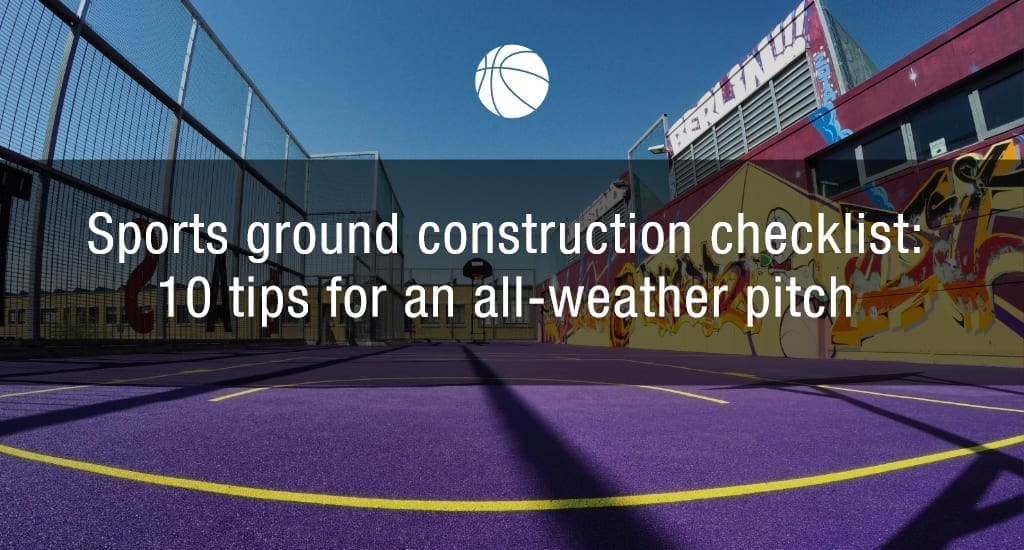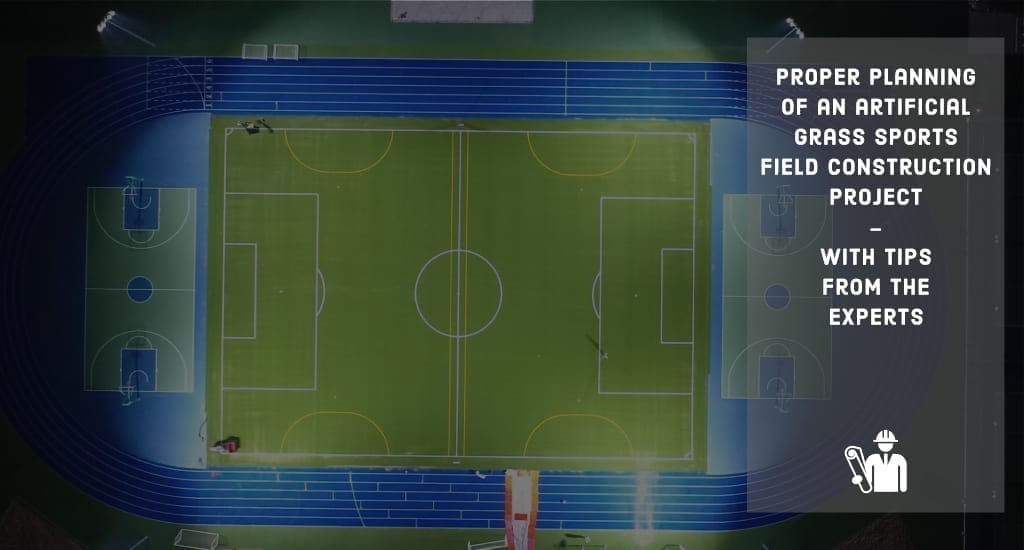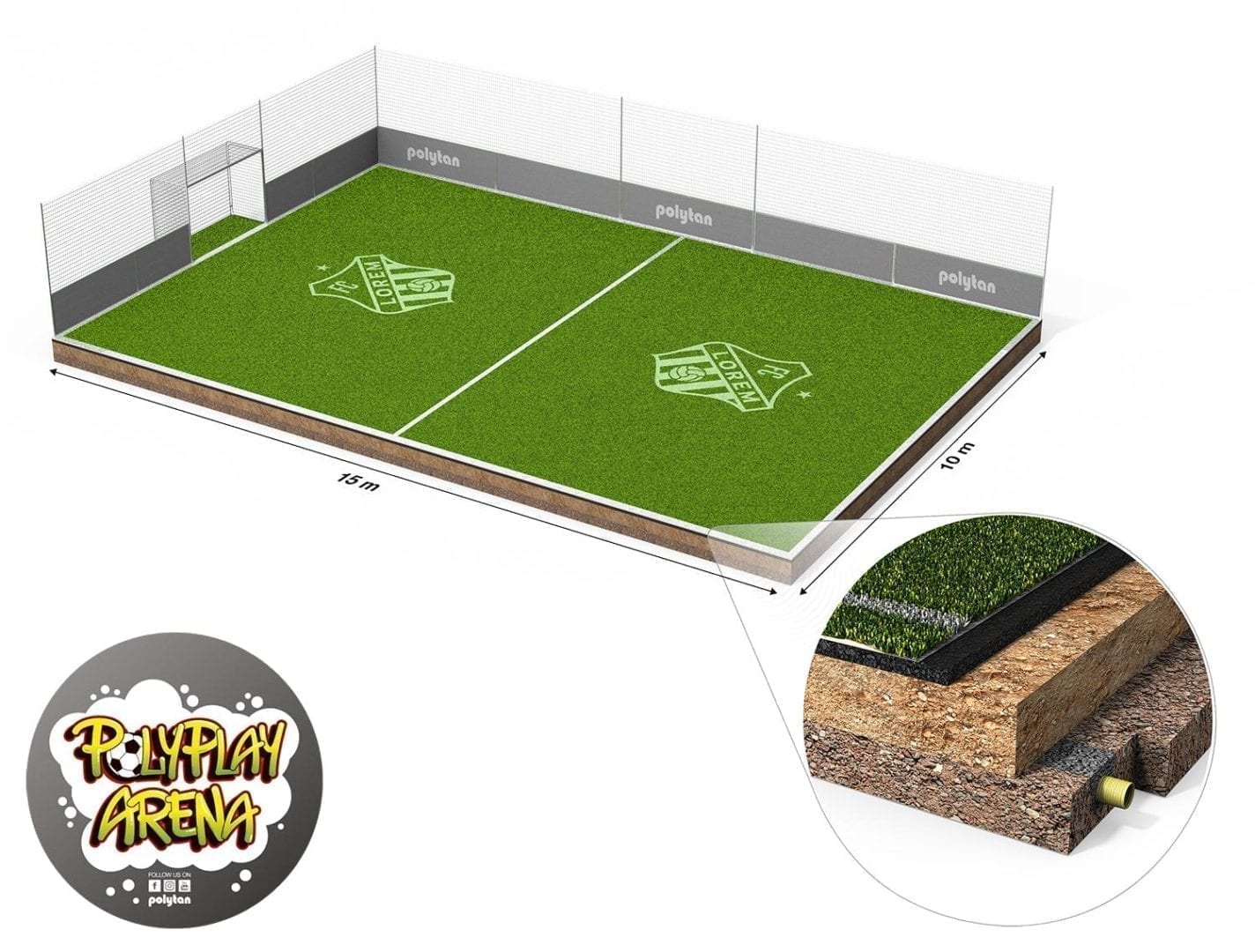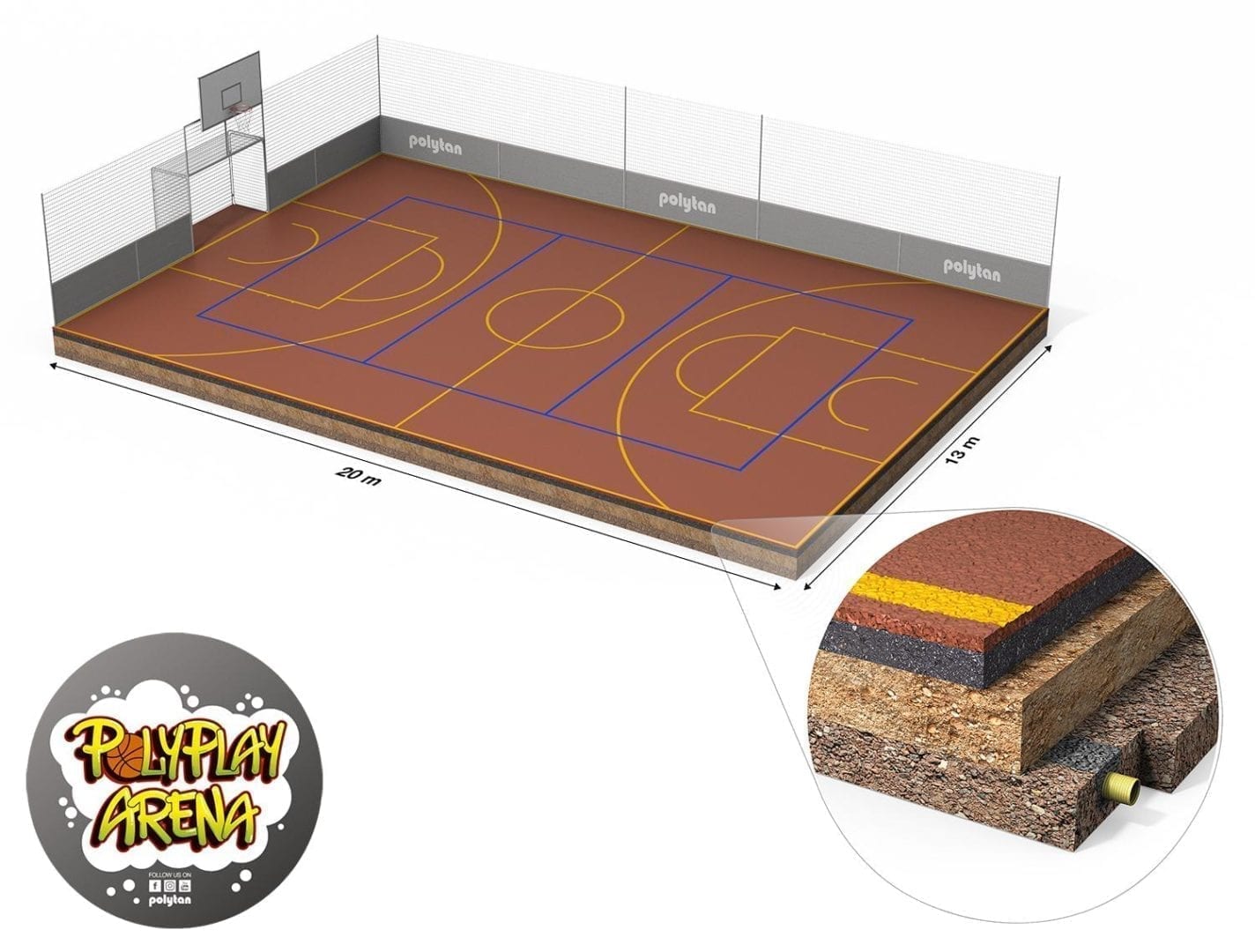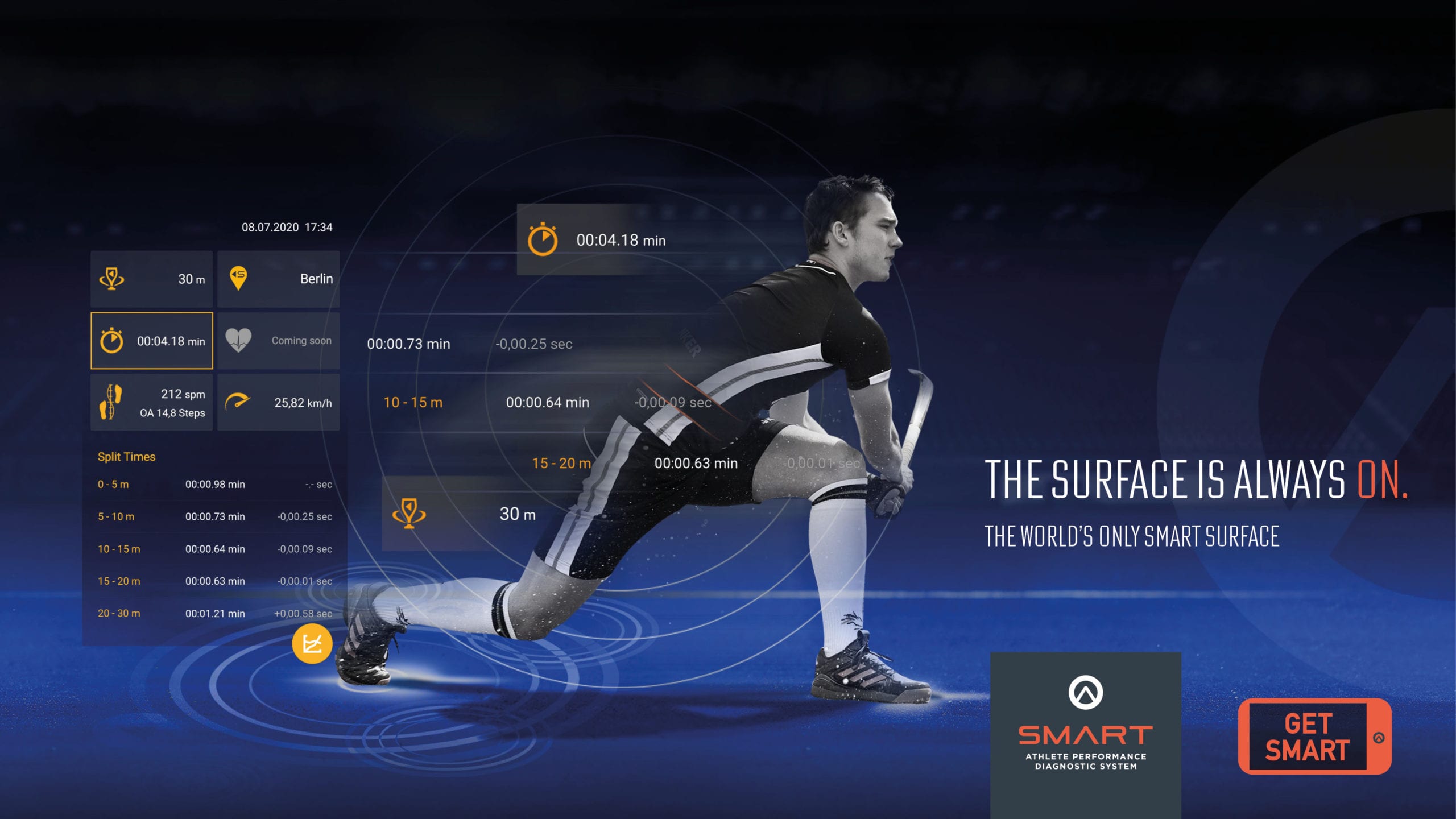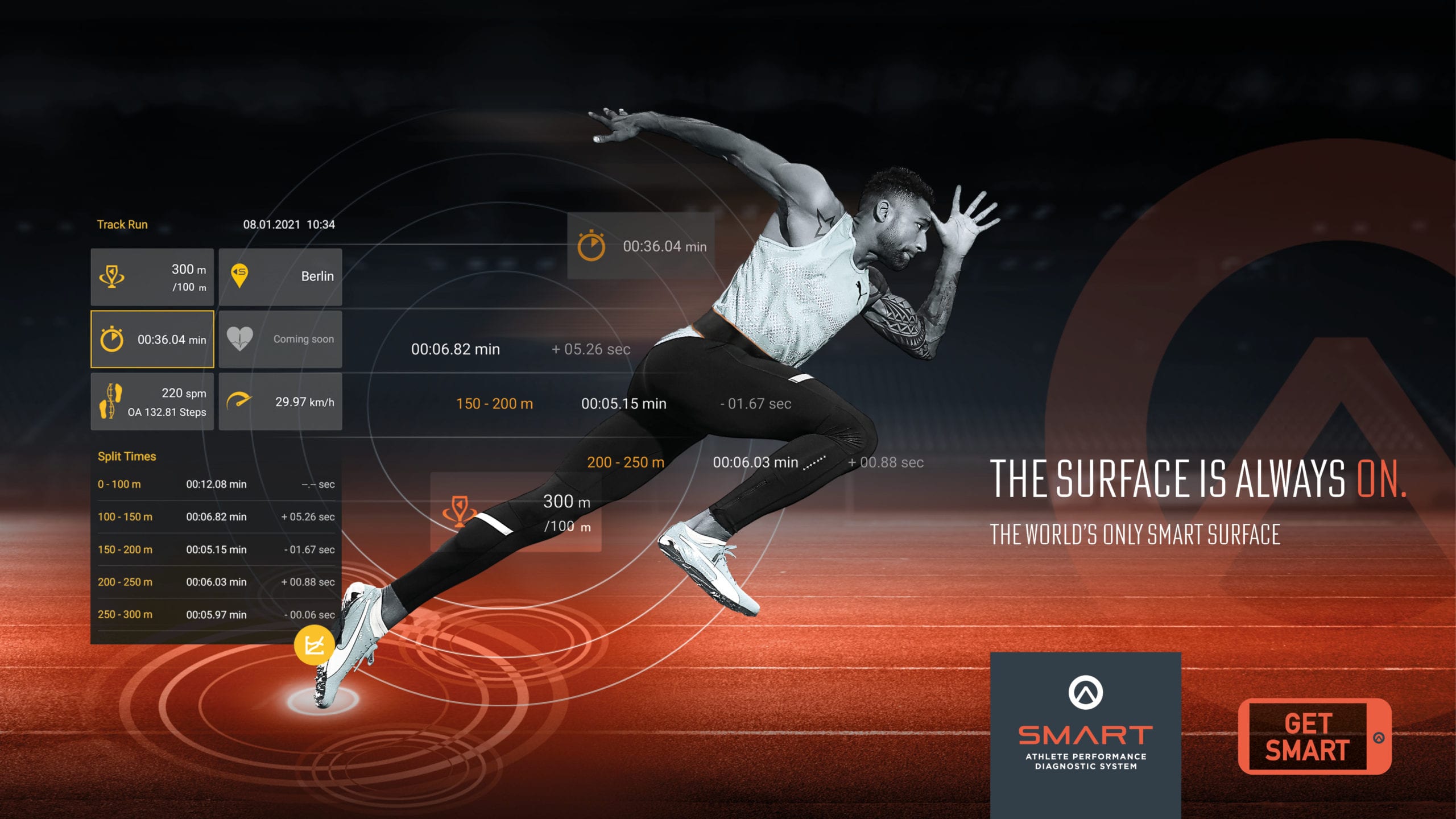Athletics is very popularity in Germany – not least demonstrated by the membership figures of the German Athletics Association (DLV). With over 850,000 members in 7,753 clubs (as of November 2018), it is one of the biggest high-performance sports associations in Germany and is also the largest athletics federation in the world.
All these enthusiastic athletes require optimal training and competition conditions, whether they are recreational amateurs or professionals in high-level sport. Sports clubs offer athletics facilities – also known as sports arenas – with specialised custom facilities for sports disciplines such as walking, running, jumping, throwing and shot put, and are often also arranged around football pitches and other sports fields. These include circular, short-distance and obstacle tracks with water jumps for runners; high jump, long jump, triple jump and pole vault facilities for jumpers; and hammer, discus, javelin and shot put facilities for the throwers.
Running tracks, large playing fields, football pitches and multifunctional surfaces
At the heart of every outdoor facility is the athletics track: this oval-shaped 400-m track runs around a large grass sports field, which is increasingly often covered with artificial grass. The two D-shaped sports surfaces, which are created between the curves of the track with the same radius, and the football field in the middle, provide enough space for the individual facilities required for the various athletics disciplines of jumping, throwing and shot put, including a water jump for steeplechasers. In schools, these two areas may also include basketball and volleyball courts.
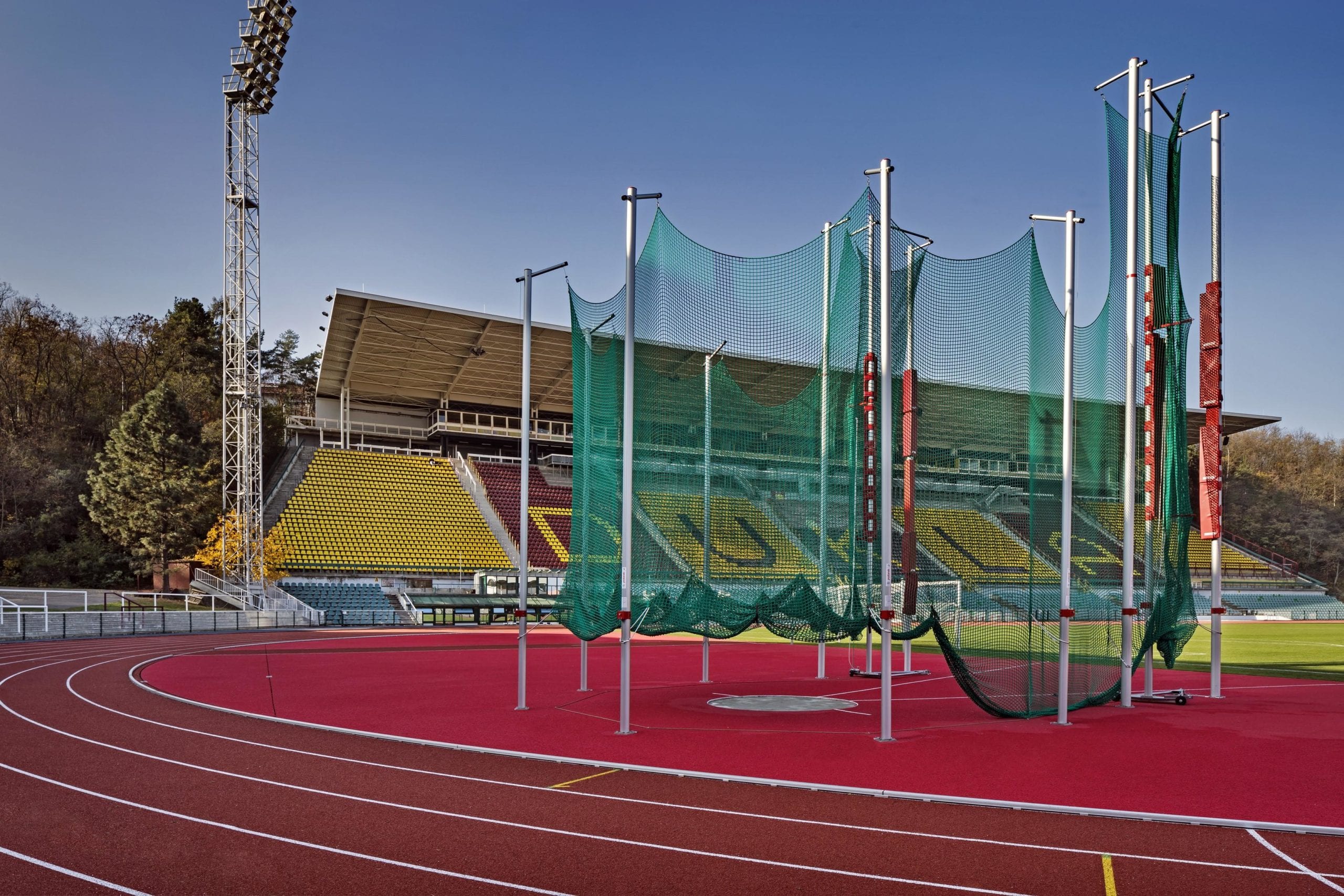
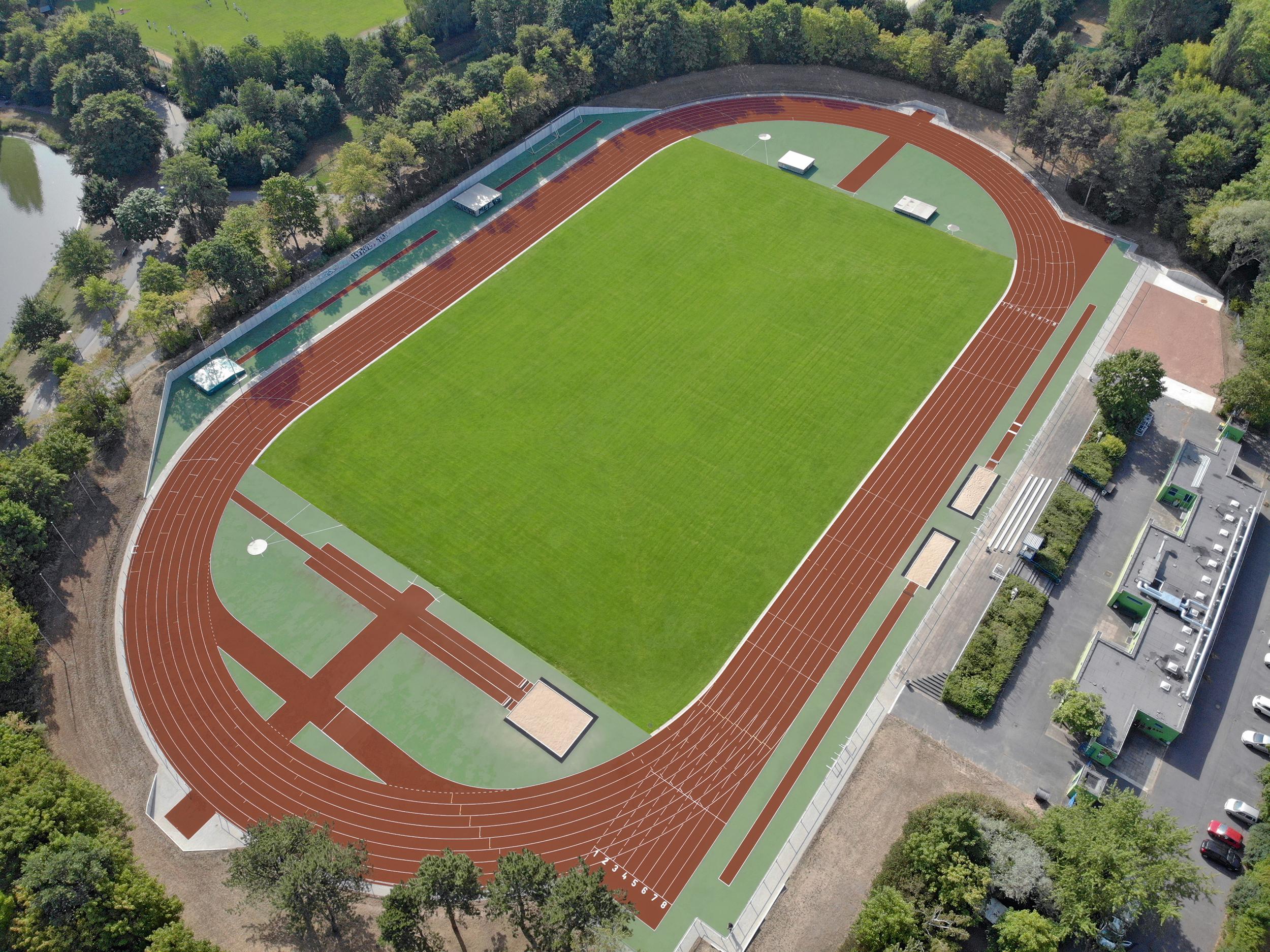
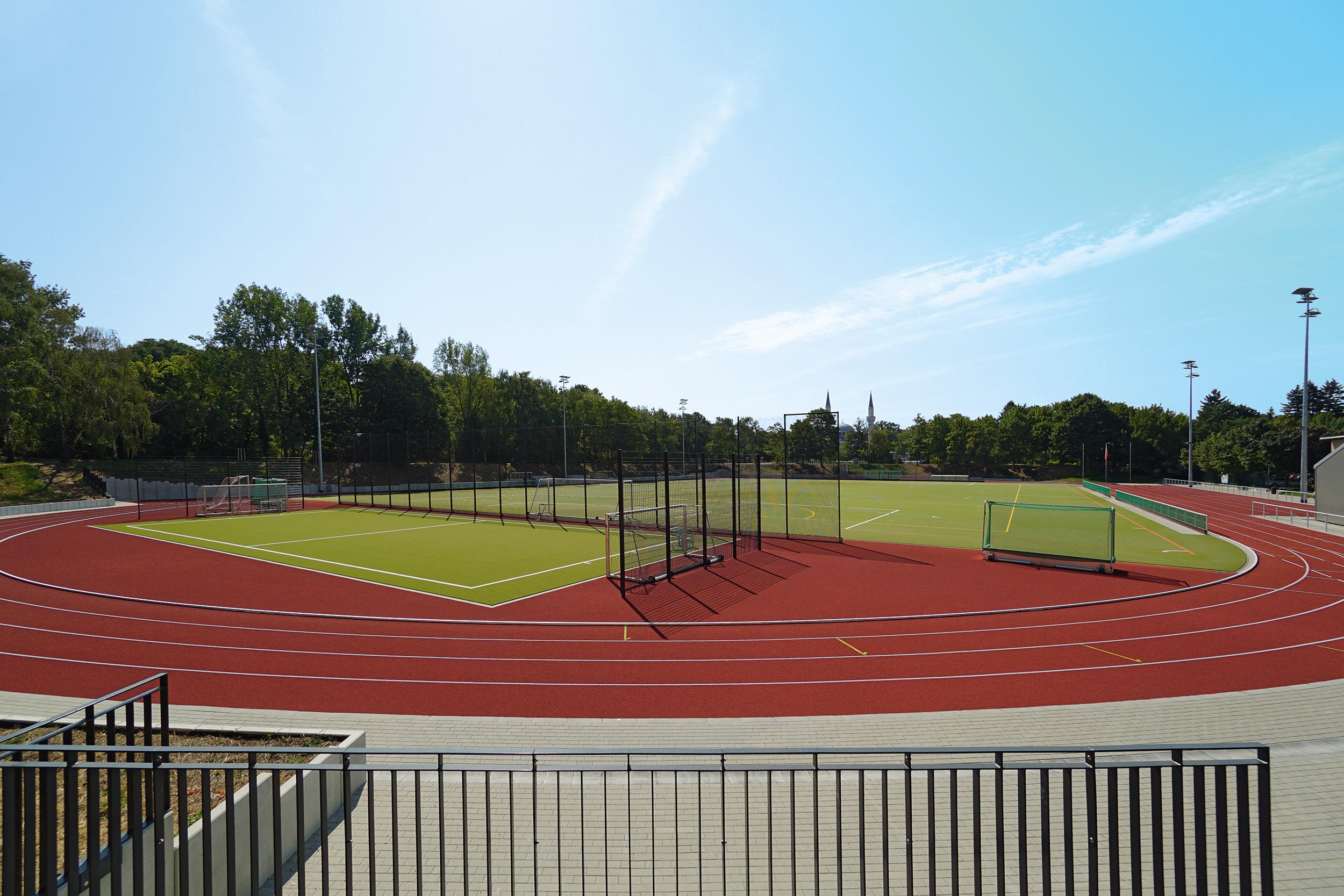
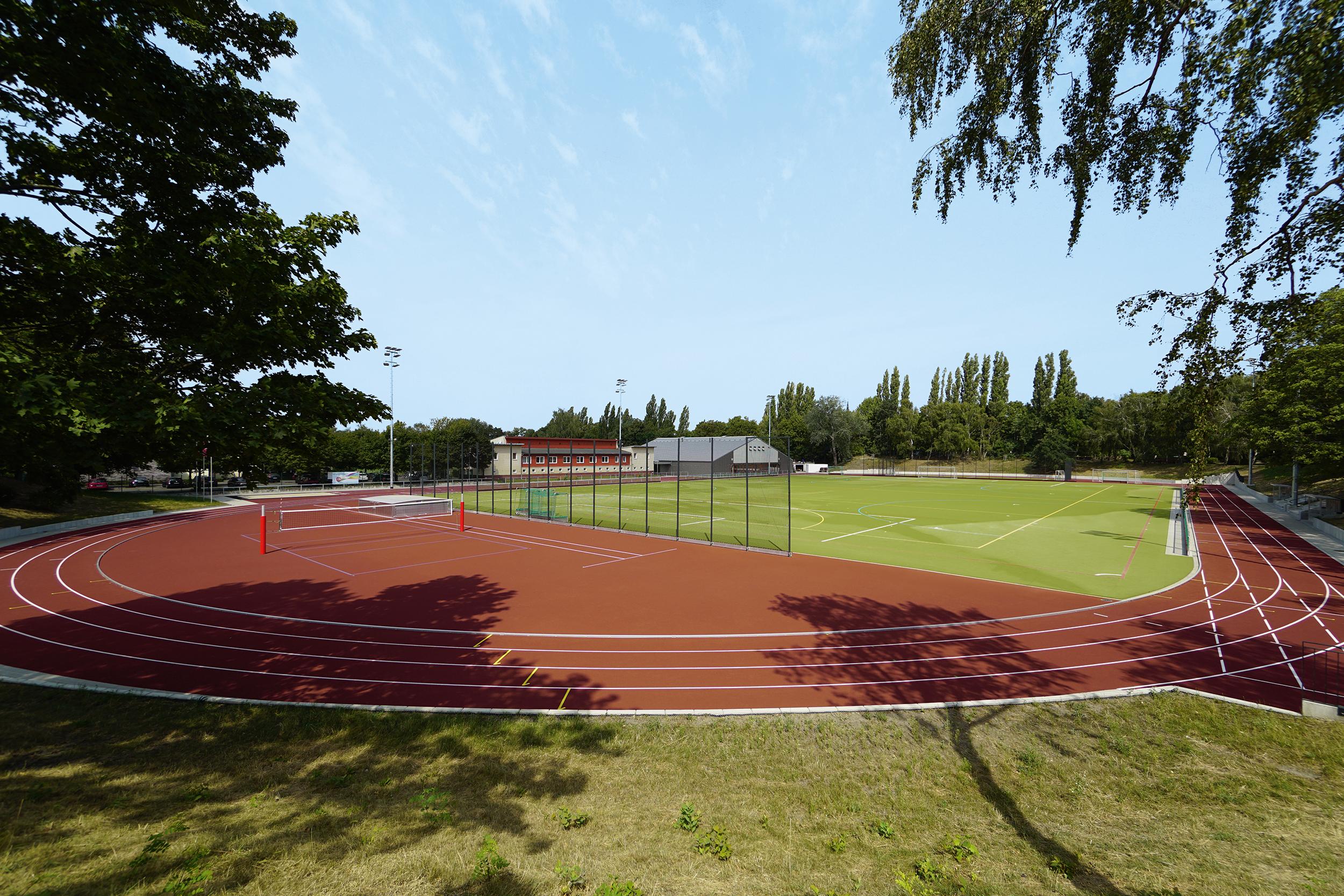
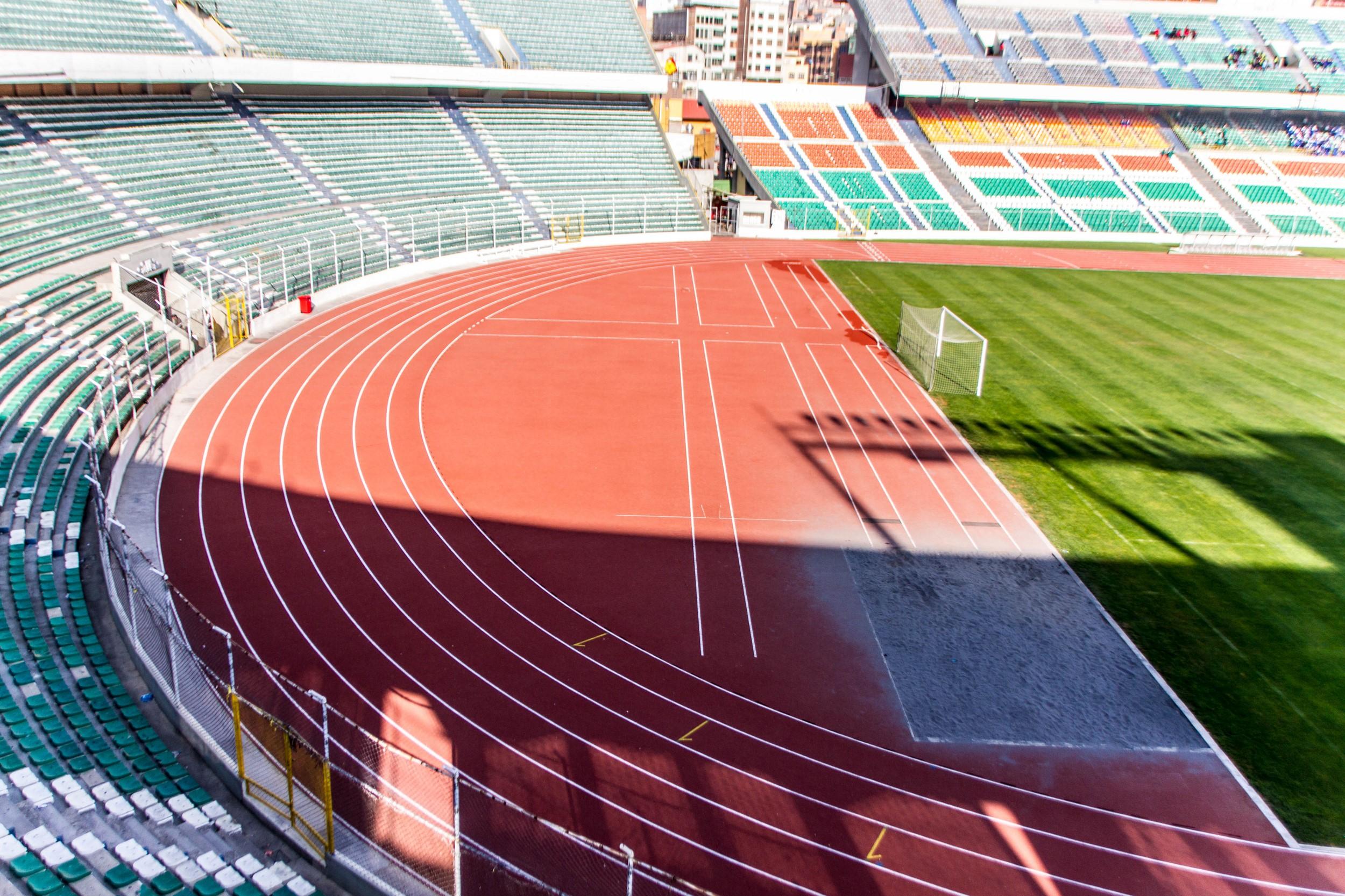
When it comes to track lengths, DIN-compliant track dimensions are crucial
Athletics facilities are available in different dimensions and with different equipment. Determining which variant is suitable for which club, school or community depends on the intended use, which is best analysed and confirmed through a usage concept, designed by an expert beforehand. A specialist sports facility construction planner or landscape architect can also help when it comes to calculating the costs of the sports field construction or the costs of the Tartan track, as well as regulation-compliant lines and markings for the athletics track.
Whether the sports facility requires additional World Athletics Class 1 or Class 2 certification is determined based on whether or not national and international competitions will be held there. World Athletics Class certification can be arranged and managed for tracks that require it by Polytan, for example, once the sports track is completed. Structuring of outdoor athletics facilities is closely regulated by DIN 18035-1:2003-02, Part 1 ‘Sports grounds: Outdoor play and athletics areas, planning and dimensions’. Here, sports arenas of types A, B, C and D are defined.
Type A Arena – a competition track suitable for international competitions
If you want to install a running track or Tartan track where national and international athletics meetings can also be held, you must opt for a Type A arena, which must also be WA Class 2 certified. Type A athletics tracks feature eight single lanes and is at least 176.91 m long and 93.08 m wide. The size of the football pitch or grass sports field is 109 x 73 m, which ensures that a standard football pitch size of 105 m × 68 m, as recommended by FIFA and UEFA, can be perfectly accommodated – including safety zones inside the track. In addition, Type A arenas feature eight to ten straight individual lanes for sprint and hurdle disciplines, a steeplechase track with a water jump, one or two high jump installations, two pole vaulting installations, two combined installations for long jump and triple jump, a combined discus and hammer throwing area, two javelin throwing areas and two shot put circles.
Type B Arena – for ambitious athletes
If, on the other hand, you only want to hold regional and inter-regional sporting events on your Tartan track, a Type B arena is sufficient. This will also meet the demanding training requirements of high-performance athletes. The total length of a Type B track must be at least 172.03 m, with a width of at least 90.08 m. Just like Type A arenas, Type B areas feature an oval 400-m Tartan track; however, they only features six individual track lanes. Here, too, the large sports field corresponds to the standard dimension of 105 x 68 m (109 x 73 m, including safety zones within the circular track). There are only six to eight individual track lanes for use in straight sprints and hurdles. In addition, there is an obstacle course, one or two high jump installations, a pole vaulting installation, a combined triple installation for long and triple jump, a discus and hammer throwing area, two javelin throwing areas and a shot put circle.
Type C and D Arenas – suitable for schools
Type C and D arenas are suitable for less competitive recreational sports or for schools. Tartan tracks, which correspond to Type C arenas, feature four 400-m long individual track lanes, as well as four to six straight sprint and hurdle track lanes. A large 105 x 68-m football pitch can also be created with a total track length of at least 167.18 m and a total track width of at least 85.20 m. A single installation is available for the athletics disciplines of high jump, pole vault, javelin and shot put. A combined triple system for long and triple jump, as well as a combined discus and hammer throwing area complete the Type C arena facilities.
As previously mentioned, the playing field areas provide enough space for combined basketball (26 x 14 m) and volleyball (18 x 9 m) courts. Type D arenas are also suitable for school and recreational sports. In accordance with DIN standards, they consist of a large playing field, a short-distance track and various throwing and jumping installations. However, Type D arenas do not feature a circular athletics track. In addition to the general concept of an arena, athletics facilities for competition use must feature prescribed lines and markings.
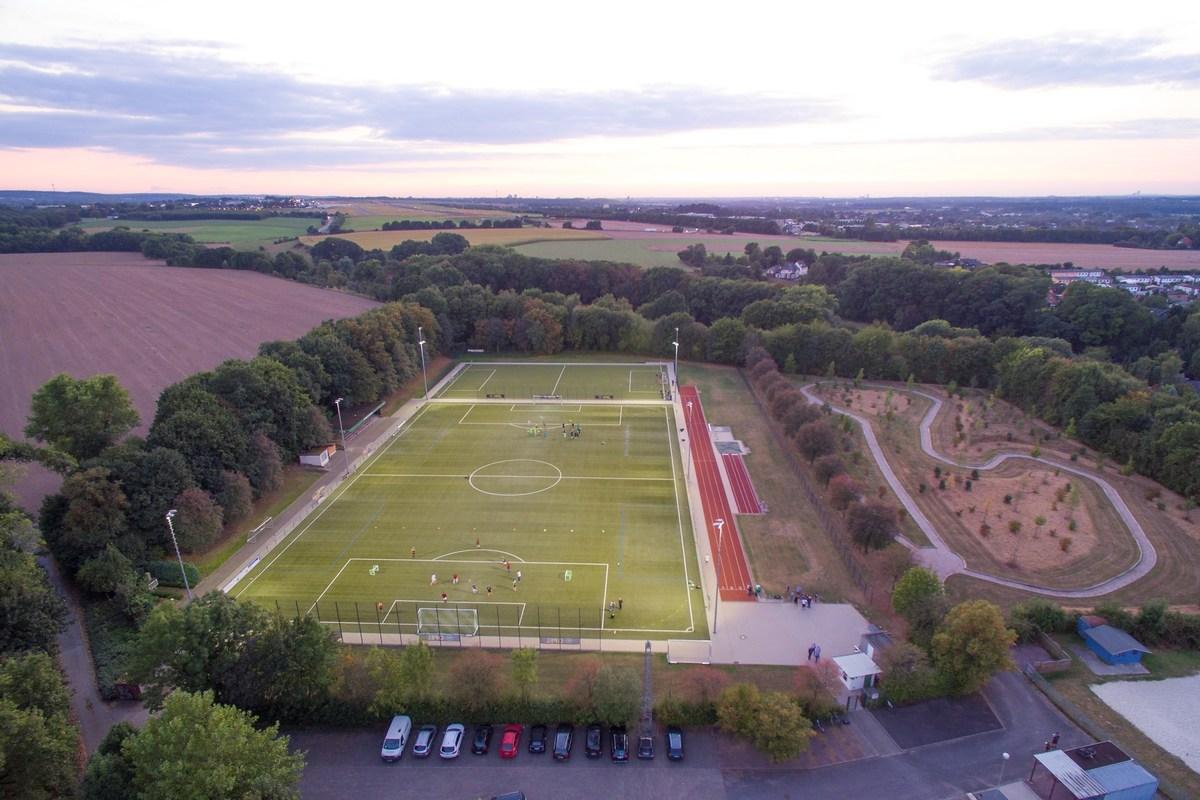
White borders mark the inner running track boundaries
According to International Competition Rules (ICR), the athletics track must be marked by white interior borders along the two curves. It should be made of a suitable material, measuring 50 to 65 mm high and 50 to 250 mm wide. Materials that are commonly used include aluminium strips or, as is popular in Germany, fibreglass-reinforced synthetic coverings. In most cases, this interior track boundary continues along the two straight lines; however, this is not mandatory. In accordance with the ICR, 50 mm wide white lines are also sufficient.
Special lines and markings for all sports disciplines
Athletics world records can be achieved around the world, not least because all the track lines and markings of a certified athletics facility meet the rigorous requirements of the World Athletics Federation. Each individual discipline has its own start and finish markings, which are optically visualised on the synthetic surface by different lines in specified colours (white, yellow, green and blue). The most striking markings are the 5 cm wide, white boundary lines of the individual lanes. These must all have the same width of between 1.22 and 1.25 m. Each of the individual lanes is numbered consecutively, starting with the inner lane as number one. The WA-compliant line markings of Type A, B, C or D arenas are created by experts such as Polytan as soon as the synthetic surface has been installed. The synthetic surface itself is available in a wide variety of designs and properties, again depending on the installation’s pre-defined usage concept.
Synthetic athletics tracks: structure
Athletes initially trained on the first synthetic athletics track – also known as Tartan tracks – in 1968 in Zurich’s Letzigrund Stadium. In the same year, the cushioned sports flooring was used at the Olympic Games in Mexico and has since become the standard at top sports events. Today, it is rare for athletics facilities in Germany still to feature cinder tracks, which consist of a gravel or ash bed with a firm-rolled top layer of a mixture of cinders, red sandstone or sand. However, as a rule, the rust-red colour of cinder tracks, which was adopted for the colour design of modern synthetic Tartan tracks, has prevailed. Nonetheless, blue tracks, such as those at the Olympia Stadium in Berlin, are also currently enjoy great popularity, and the trend is on the rise.

Modern tracks are available in two varieties: as coated, water-permeable surfaces with a special structure (also known as a spray coating, DIN EN 14877 2013, Type A) or waterproof full polyurethane/sandwich coatings (also known as a spread coating or solid synthetic coating, DIN EN 14877 2013, Types D to F). Depending on the requirements, we can recommend various Polytan products. For example, our waterproof, multi-layer poured surfaces Rekortan PUR and Tartan GOLD are mainly used in stadiums that hold top international sporting events. They offer maximum acceleration performance and excellent stable force absorption.
Our professional poured sports surface Rekortan M, which is also used in school sports facilities, is also suitable for competition use. When it comes to multi-purpose facilities, the coated, water-permeable, all-round synthetic Rekortan BS / Rekortan B2S systems are the perfect choice for competition and training installations. Their seamless and completely flat installation is carried out by Polytan’s trained, experienced employees who work on site using the in-situ installation method. This ensures that the athletics track features consistently optimum properties over its entire surface. Prefabricated sheet materials, which are only laid out on site, are somewhat rare in Germany and are not part of the Polytan range.
Athletics track: sports field construction costs
The cost of rebuilding a synthetic track for a club or community primarily depends on the surface thickness and the quality of the chosen product. If the track is to be a different colour than the classic brick red of early cinder tracks, this will also incur additional costs. If the project involves refurbishing the running track, the base layer can be reused under certain circumstances – here technicians or experienced site managers can help to inspect the track and make recommendations for its maintenance or replacement. When refurbishing, the cost of professionally dismantling and disposing of the sports surface must be included and, if necessary, dismantling of the base layer.
Conclusions: athletics tracks
The construction or renovation of an outdoor athletics facility requires expert knowledge – preferably in the form of years of experience in sports facility construction. Experts can assist in the creation of a usage concept, assessment of the substrate, selection of a suitable synthetic surface and the exact surface markings required according to ICR and WA regulations. A realistic estimation of the costs should also be included. In collaboration with regional associations, Polytan offers seminars on the construction of athletics facilities, for example. A visit to an existing facility is always recommended and Polytan can also help you in this regard!
